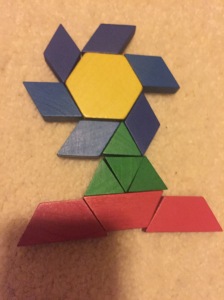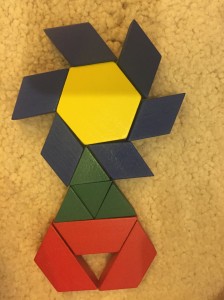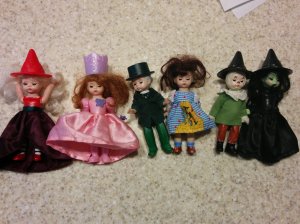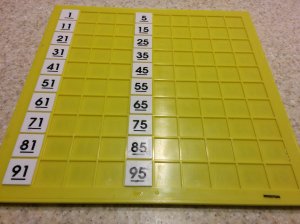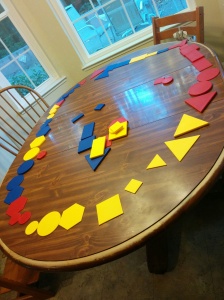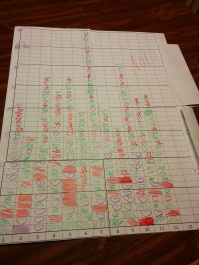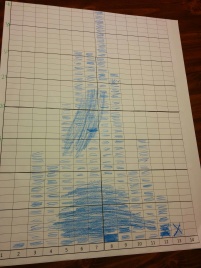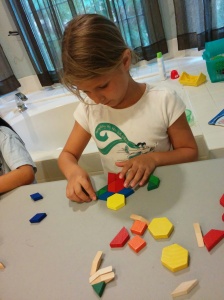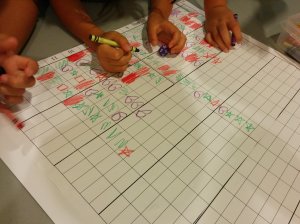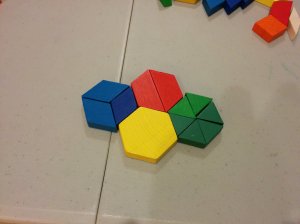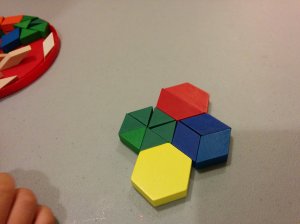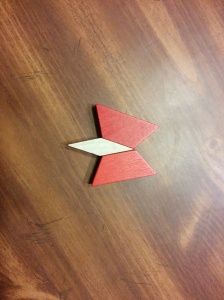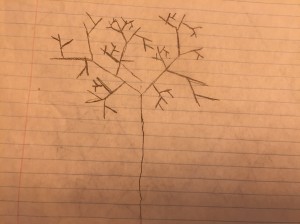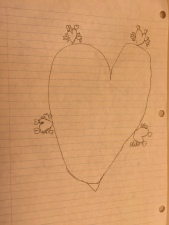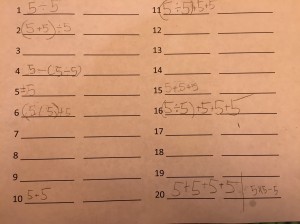The Activities
- Topic: Numbers: Book: The Number Devil by H. Enzensberger, Chapter 2.
- Topics: Probability, Graphs: We revisited the activity from last week where we made two big charts, one for the sum of two six-sided dice, the other for a twelve-sided die. This time, I wrote a computer program to simulate dice rolling, and ran it until the winning number came up 50 times. I ran it twice each for 1d12, 2d6, and 3d4 (left to right below), and then copied each result into a chart. Then, I showed the kids each chart and asked them how they thought I had made each of the charts. We had only done 1d12 and 2d6 before, so including 3d4 was kind of cheating.
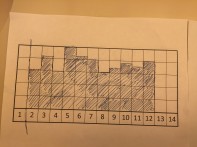
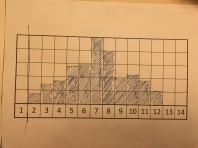
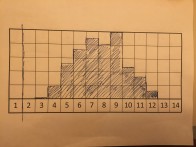
- Topic: Spatial Reasoning: We continued the activity from last week where one kid made a shape using pattern blocks and then described it to the other kids. This time I varied whether the kids worked individual, in one big group, or 2 small groups to follow the instructions.
How Did It Go?
We had all five kids this week.
The Number Devil
We read most of the 2nd chapter, which talked about zero and how Roman numerals are unwieldy because they don’t have place values. We stopped and talked at a number of places, the kids were pretty involved.
Probability Charts
At first the kids didn’t want to volunteer many opinions. I had them vote on each one, for a while only one or two kids voted each time. After a while, they had grouped into two piles: (1d12, 1d12, 3d4) and (2d6, 2d6, 3d4). They decided 3d4 didn’t fit, and moved it to the other pile. So they got everything as right as possible. Then I told them that I had actually rolled 3d4 for 2 of them, and pointed out how 2 was missing on those charts and how 3 and 12 were so low. They thought it was cheating :).
Describing Shapes
We did 3 different patterns this time, the kids are getting increasingly ambitious in their patterns. The pictures above show one of the results. The top part was described as a flower; you can see that the petals are pointed in the wrong orientation. Also, the relationship between the three trapezoids wasn’t described. The final pattern was quite a bit more complicated, and I needed to help or they would have been way off (due to under specification of directions). They do well when the shapes are totally symmetric, because they can guess what it should look like.
